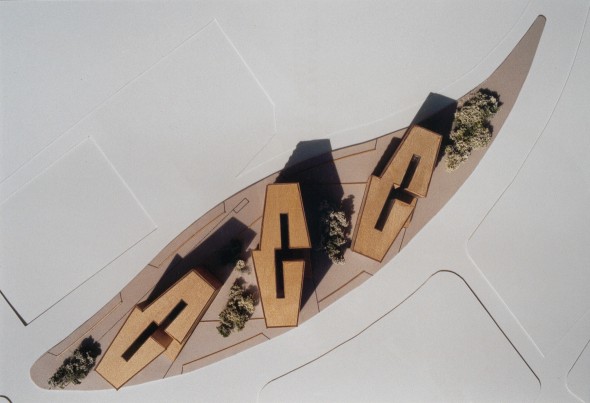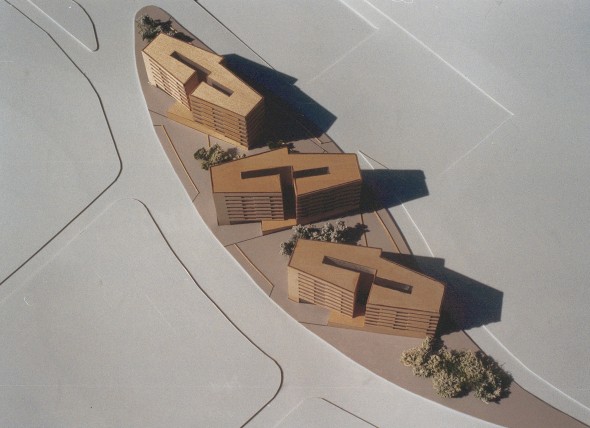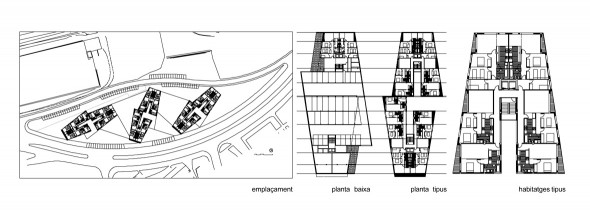305 unit housing competition in Barcelona
| Dates | 2000 |
| Site | Trinitat Nova. Barcelona |
| Client | INCASOL |
| Built area | 30.876,54 m2 |
| Architects | Joan Pascual |
| Imaging | In-house |
LIMITED COMPETITION PARTICIPATION | 2000
Trinitat Nova quarter, located on the Coll de Finestrelles, is an example of high density housing of the modern city, resulting of a rushed response to the high demand of housing during the 1950s and 1960s migration waves.
The general layout of the scheme is a result of two of the main requirements of the competition: the allocation of 250 units on a site with a very complex topography, while guaranteeing maximum transparency and visual connection with the Collcerola Natural Park and surroundings.
The first decision is to allocate all the units in three independent blocks which will allow the creation of spaces between them in order to ensure the desired transparency.
Each block has two stair and lift cores, serving 7 and 6 units per floor respectively. These cores are the spine of the buildings, the units gathering around them. It is the fitting of the cores in the layout that results in the wedge shape of the blocks.


